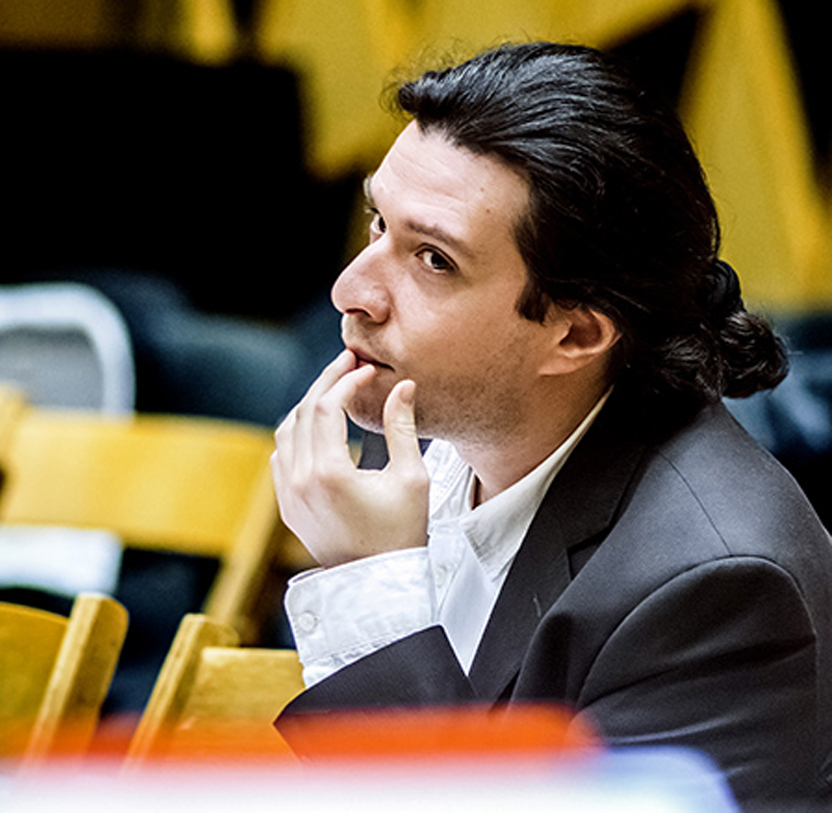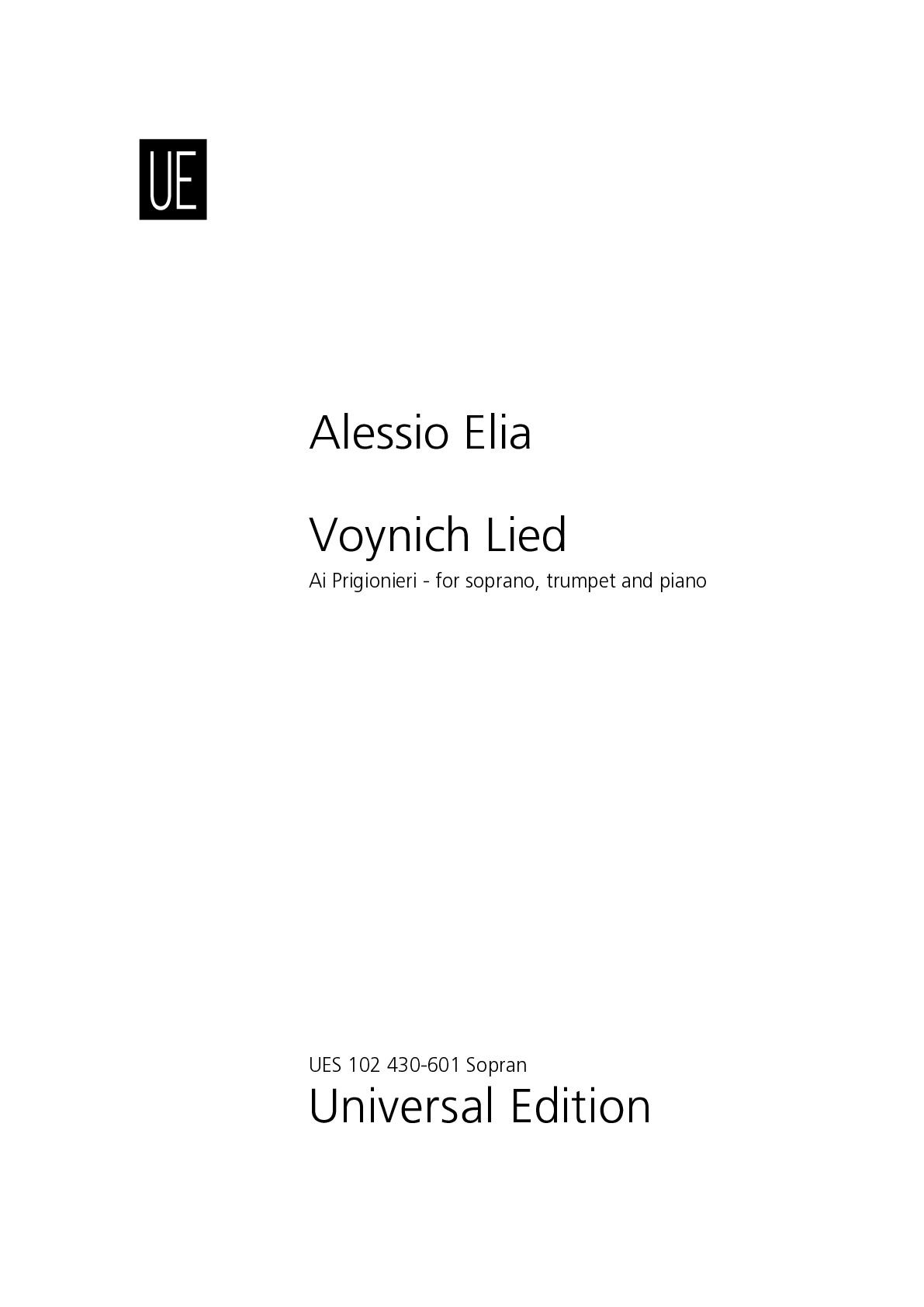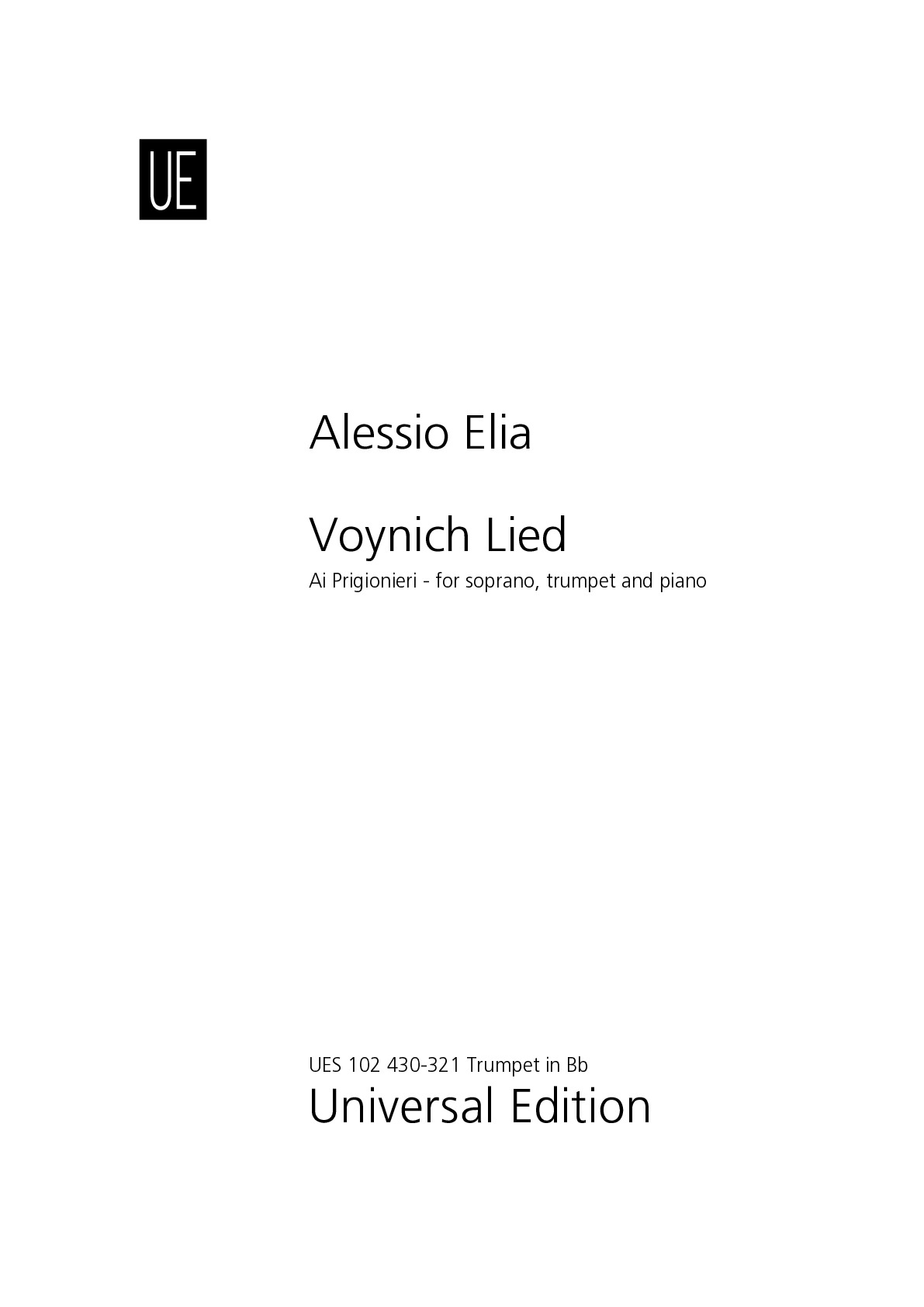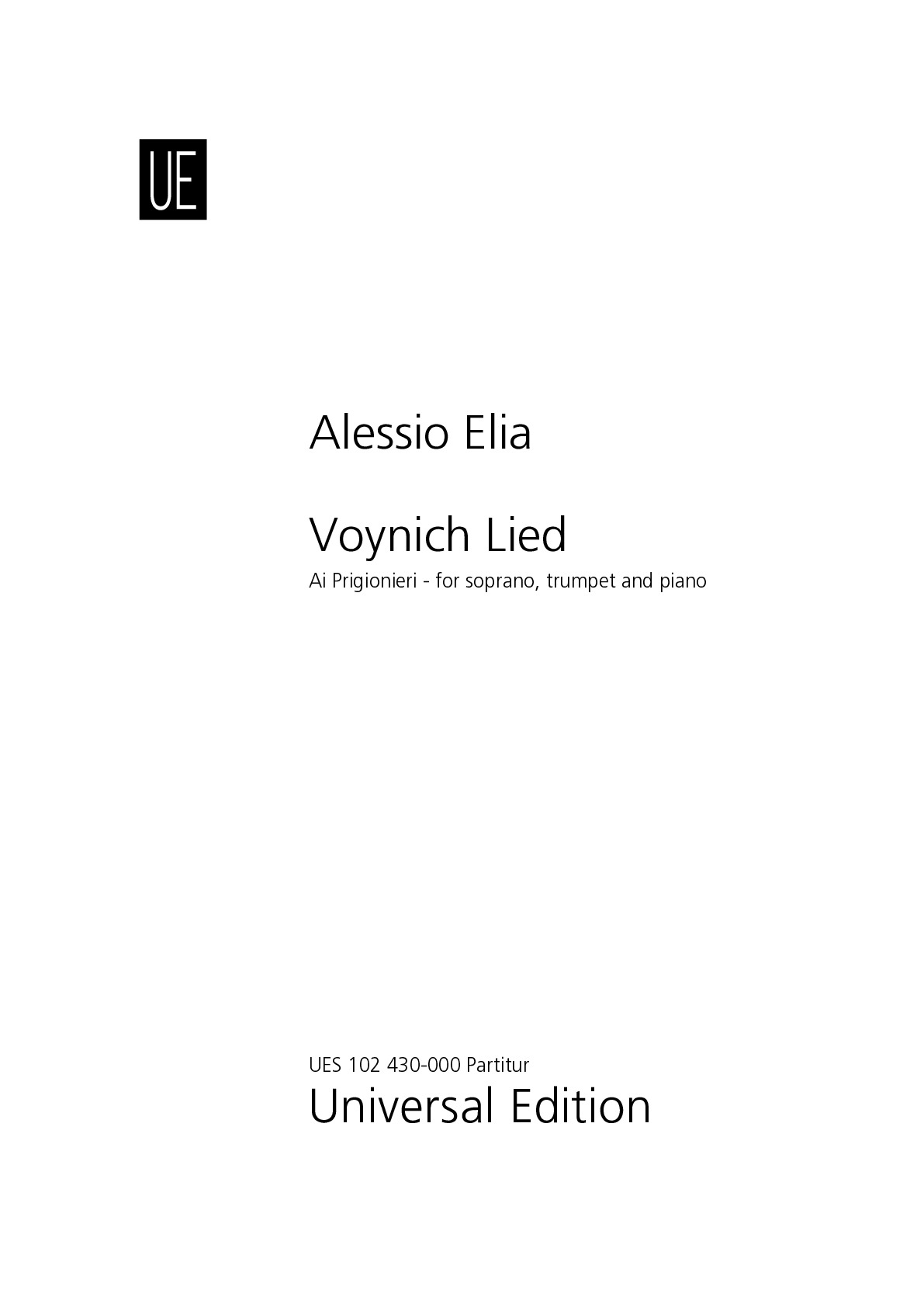

Alessio Elia
Voynich Lied
Duration: 8'
Solos:
soprano
Instrumentation details:
trumpet in Bb
Voynich Lied
Sample pages
Video
Work introduction
“Voynich Lied – Ai Prigionieri” is a piece scored for soprano, trumpet and piano, whose text is taken from folio 99v of the Voynich manuscript, a codex carbon-dated to the early 15th century (1404–1438), and probably composed in Northern Italy during the Italian Renaissance.
The manuscript is named after Wilfrid Voynich, a Polish book dealer who purchased it in 1912 from the Jesuits of Villa Mondragone, Frascati, a large country palace near Rome.
The uniqueness of this manuscript lies on the fact that it is written in an unknown script.
Till nowadays nobody was able to decrypt it, so that the exact content of the book is unknown.
Because of the presence of illustrations it is possible to subdivide the codex into 6 sections:
herbal, astronomical, biological, cosmological, pharmaceutical, recipes.
During the centuries scholars has done many hypothesis about the content and the author.
Some of them believe it is a text preserving particular and secret medical or magical formulas.
The text I selected belongs to the section of recipes. In the folio 99v the author made a series of illustrations showing roots of different plants, most of them not recognizable, and not identified instruments, supposedly medical, for mixing and transforming the essences of those roots.
The illustrations are “explained” by a text, written in the undecipherable script of the codex.
The sounds of the text come from the transliteration in Latin characters based on the study of Stephen Bax, Professor of Modern Languages and Linguistics at the Open University, UK, and former Professor of Applied Linguistics at CRELLA, the University of Bedfordshire in the UK.
Prof. Bax assumed to have identified 10 words within the manuscript, from which he obtained 14 possible phonemes of those characters that compose them.
I chose a text which includes all these phonemes.
From the point of view of the musical construction an important role is played by the ways ars subtilior used lines, counterpoint, harmony and rhythm. The piece is a re-invention of this style, integrated with the nucleus-asymmetrical harmonies which are a constant feature of my music. These harmonies are constructed around a nucleus (a central sound) in such a way that the complementary sounds of each chord are asymmetrical inversions if referred to this central sound.
All these characteristics are assembled together in a way that points out echo-sound trails, reverberation and the emphasis on physical properties of the sound, that is a main field in my musical research. The form is constructed in such a way that the modal/nucleus-asymmetrical-harmony-based first section is constantly transformed into something seemingly different, including elements of the virelai, ballata and madrigal.
The subtitle, "Ai Prigionieri" means "To Prisoners". In Italian "prigioniero" is mainly a person who cannot enjoy freedom, even in a metaphorical way (like "prisoner of an idea, ideology etc."), so not necessarily somebody who is in prison.



